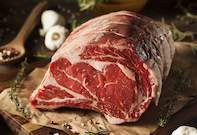
Merino sheep are a dual-purpose sheep, produced both for their wool and their meat. Declines in the demand and profitability over time have changed the focus of production.
Over the past few decades, the focus of production has moved from mostly farming for wool to now mostly farming for meat.
This change in the ratio between the wool and meat prices made it necessary for farmers to adapt to the breeding methods and requirements of merino sheep. The purpose of these changes has been to achieve the most economically efficient type of merino to serve market demands.
These changes have been successful in improving the breed. During the past three decades, merino breeders have evolved the ‘modern Merino’ into an animal with a wool-to-meat ratio of about 30:70. Over the years farmers have adapted the sheep to market demands and environmental conditions.
The status of the breed has been described as bigger, plainer, hardier, more functionally efficient and more economically productive than ever before. The breed is also considered as the best dual-purpose sheep breed available today.
Over time scientific knowledge has also created a better understanding of sustainable grazing practices. Today merino stock farming is generally practiced according to holistic farming practices which include environmentally sustainable approaches.
 Sheep farming is done all over South Africa, but is traditionally concentrated in the more arid regions of the country. Although the income ...
Sheep farming is done all over South Africa, but is traditionally concentrated in the more arid regions of the country. Although the income ...